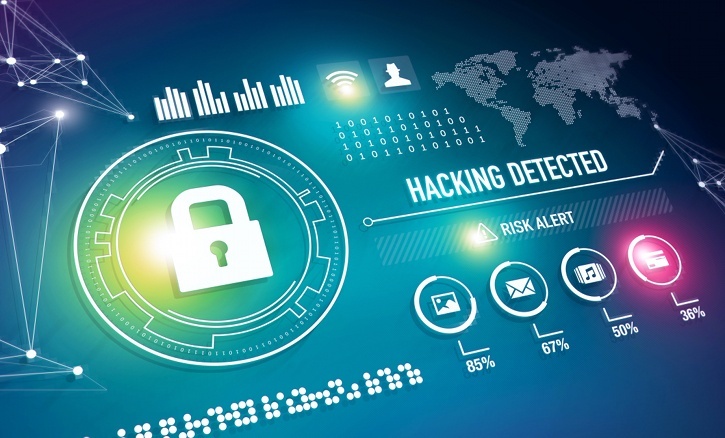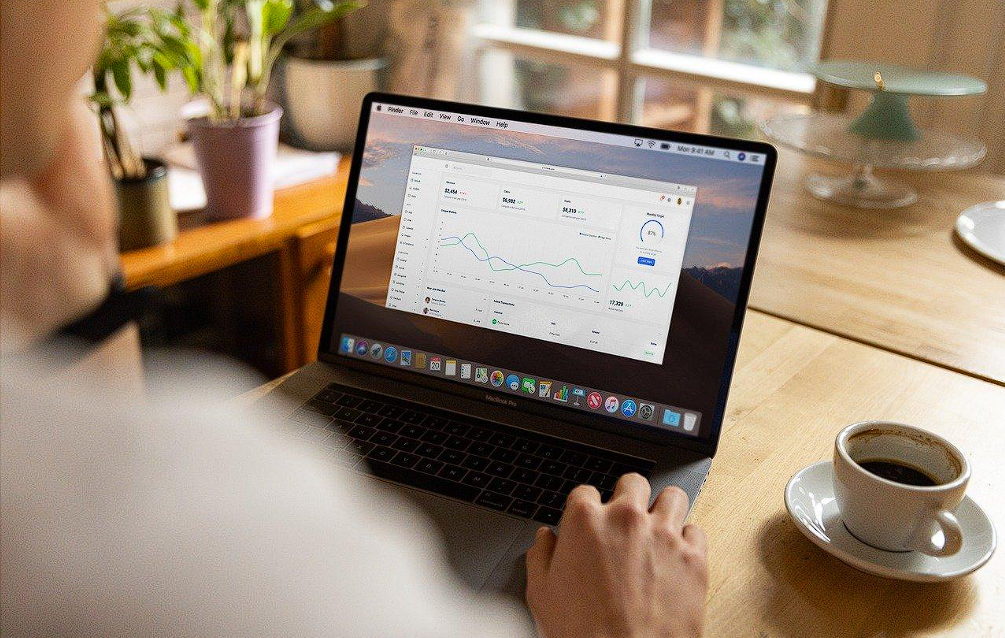Enterprise Data Security Best Practices | Venn

A decade ago, enterprise data security was simpler. Employees worked in offices, on company-managed computers, inside the safety of a well-defined corporate network. Firewalls, VPNs, and endpoint protection kept things in check. Today? That model has all but collapsed.
The modern workforce has shifted. Contractors, offshore workers, and employees scattered across the globe now often work on their own laptops and rely on home networks. In this new era of BYOD (Bring-Your-Own-Device) and remote/hybrid work, the perimeter has all but disappeared. However, many organizations are still relying on tools and frameworks built for yesterday’s office-bound reality.
At the same time, the stakes have never been higher. There are more and more cyberattacks that are increasing in volume and sophistication, and shadow IT is rampant. A misplaced laptop or an accidental email can cause a breach that results in millions of dollars in fines, legal exposure, and reputational damage.
The solution is a new mindset; one that’s rooted in Zero Trust principles and tailored to the way work really happens today. In this blog post, we will outline enterprise data security best practices for today’s hybrid and BYOD environments, and introduce an entirely new way to protect data without compromising usability or end-user privacy.
What Is Enterprise Data Security?
Enterprise data security is the collection of strategies, technologies, and processes used to protect an organization’s sensitive data from unauthorized access, misuse, or loss.
Unlike general cybersecurity, which covers areas like network security or malware prevention, enterprise data security focuses specifically on safeguarding information: customer data, financial records, healthcare data, intellectual property, and more.
At its core, the goal of enterprise data security is simple: protect sensitive data without disrupting how people work. But achieving that goal is anything but simple, especially when you take into account today’s decentralized, device-diverse workforce.
Effective enterprise data security reduces the risk of data breaches, helps meet regulatory compliance requirements (like HIPAA, PCI DSS, SOC 2, etc.), and minimizes the threat of insider misuse or accidental loss.
Common Data Security Risks Enterprises Face
Just worrying about hackers is not enough. Some of today’s biggest threats to enterprise data are closer to home:
- Human Error
- The top culprit behind many breaches. A worker clicking on a phishing link, misplacing a file, or emailing the wrong attachment can all expose sensitive data.
- Insecure BYOD Devices
- Personal laptops and phones often lack the necessary enterprise-grade protections. Without the right controls, they’re soft targets.
- Shadow IT
- Employees often use unapproved apps (like personal Dropbox or Gmail) to work faster, but these tools are invisible to IT and create blind spots.
- Insider Threats
- Whether intentional or not, employees and contractors with elevated privileges can abuse access to data.
- Lost or Stolen Devices
- One misplaced laptop can lead to a catastrophic breach if the right protections aren’t in place.
As the attack surface expands, the defenses have to, as well. The traditional model (guarding the perimeter and trusting everything inside) is no longer enough.
Enterprise Data Security Best Practices
Now let’s get into the practical side. Here are enterprise data security best practices every organization should adopt, especially in today’s age of BYOD and hybrid work:
- Classify and Prioritize Sensitive Data
Start by making sure you know what data you have, and how sensitive it is. Use classification tools to tag data based on risk levels, so your security efforts focus on what matters most. Don’t treat a lunch menu the same way you treat PII or ePHI.
- Enforce Least Privilege Access
No one should have more access than they need to do their job. Grant access based on roles, and be sure to regularly audit those permissions. This practice helps limit exposure if an account is compromised or misused.
- Use Encryption Across All Endpoints
Encryption isn’t just for data centers. Make sure you’re encrypting sensitive data both in transit and at rest on the endpoint, including on laptops, smartphones, and removable drives. This helps ensure that lost or stolen devices don’t become breach headlines.
- Monitor for Insider Threats and Anomalies
Incorporating behavioral analytics can help flag unusual activity, like a user suddenly accessing large amounts of data at 2 a.m. Combine that with audit logs and anomaly detection to catch both malicious insiders and honest mistakes early.
- Secure BYOD Without Sacrificing Privacy
BYOD creates a paradox: IT wants control, users want privacy & flexibility. Traditional approaches like MDM (Mobile Device Management) try to lock down the entire device, but that often feels invasive, especially when users are working on personal laptops. A better approach is app-level control that isolates work without touching personal apps or data.
Tools like Venn’s Secure Enclave technology make this possible. By creating a company-controlled environment on the user’s own device, IT can secure data without overstepping privacy boundaries.
Why VDI, VPNs, and MDM Aren’t Enough
Many big companies still rely on legacy tools to secure their workforce. But in today’s environment, these solutions come with serious limitations.
VDI (Virtual Desktop Infrastructure) offers centralized control…but it comes at a very high cost, both literally as well as metaphorically with extreme latency and degraded performance. Because of this, virtual desktops often frustrate users and prompt them to find workarounds.
VPNs create a secure tunnel into the corporate network. But they don’t provide visibility or control over which apps are being used, and they can’t stop data from leaking out through personal tools.
MDM gives full control over the device, but that’s also exactly the problem. It’s too invasive for personal laptops, and many users resist it.
The shift to hybrid and contractor-heavy workforces calls for something new. Something purpose-built to support BYOD without compromising enterprise data security or privacy.
Legacy Tools vs Secure Enclave: Key Differences
| Tool | Pros | Cons |
| VDI | Central control, scalable | High latency, poor UX, expensive |
| VPN | Secure tunnel, simple | No app-level control, can’t stop data leakage |
| MDM | Full device control | Invasive on personal devices, privacy concerns |
| Venn’s Secure Enclave Technology | Data isolation and protection on BYOD computers, great UX, doesn’t compromise end-user privacy | Requires education/setup |
Venn’s Secure Enclave technology provides the best of both worlds: enterprise-grade security and consumer-level usability. It creates a visually distinct, encrypted blue border around work apps, so users know when they’re working in a protected space, and so IT can enforce policies without touching the rest of the device.
When to Use Legacy Tools vs Venn’s Secure Enclave Technology
Let’s discuss when legacy tools make sense vs. when Venn’s Secure Enclave technology makes sense for ensuring enterprise data security.
When Legacy Tools Still Make Sense
- VDI works well in highly regulated industries where all devices are managed and work is centralized.
- VPNs work well when devices are company-owned and fully under IT control.
- MDM is useful when enterprises need to entirely lock down machines or provide company-issued devices.
When Venn’s Secure Enclave Technology is a Better Fit
- When employees or contractors use their own laptops for work or are working from home, either part-time or full-time.
- When user privacy matters and full device-level control is off-limits.
- When regulatory compliance requirements must be met without disrupting user experience.
- When you want to isolate and protect work data on the device by running apps locally, not remotely hosting them in the cloud or in a data center somewhere far away.
- When you don’t want to lock down and ship laptops to workers or rely on latency-ridden virtual desktops.
How Secure Enclave Strengthens Enterprise Data Security
So what exactly is Venn’s Secure Enclave technology?
With Venn’s Blue Border, powered by Secure Enclave technology, there is a company-controlled environment installed on a user’s personal device that isolates and protects work apps and data from everything else on the device. It’s visually distinguished by a Blue Border™ and secured by built-in encryption, policy enforcement, and Zero Trust principles.
Here’s why it’s a breakthrough:
- Runs everything locally on the endpoint
- Unlike VDI, there’s no latency or poor performance because nothing is remotely hosted. Everything runs locally.
- Encrypts and isolates
- Work data stays protected even if the device is compromised.
- Respects privacy
- Only work apps are monitored and controlled; personal use remains untouched. Blue Border™ provides a visual cue to the user when they are working vs. when they’re in personal windows.
- Aligns with compliance
- Helps meet HIPAA, PCI, SOC 2, and more, without overreach and by following zero trust principles.
With Venn’s Blue Border™, powered by Secure Enclave technology, you get the control you need and the user experience your workforce demands.
Protect Sensitive Data at the Edge with Venn
The way we work has changed, and enterprise data security has to evolve alongside it. The rise of hybrid teams, offshore contractors, and BYOD devices has pushed the traditional perimeter to the edge.
Legacy tools like VDI, VPNs, and MDM were not designed for this new reality. They’re either too invasive or too slow.
Venn’s Secure Enclave technology offers a smarter path forward, allowing enterprises to isolate and protect enterprise data on any unmanaged or user-owned device, without compromising performance or privacy.
If you’re ready to explore how Secure Enclave can help your organization embrace modern work securely, book a demo.
More Blogs


